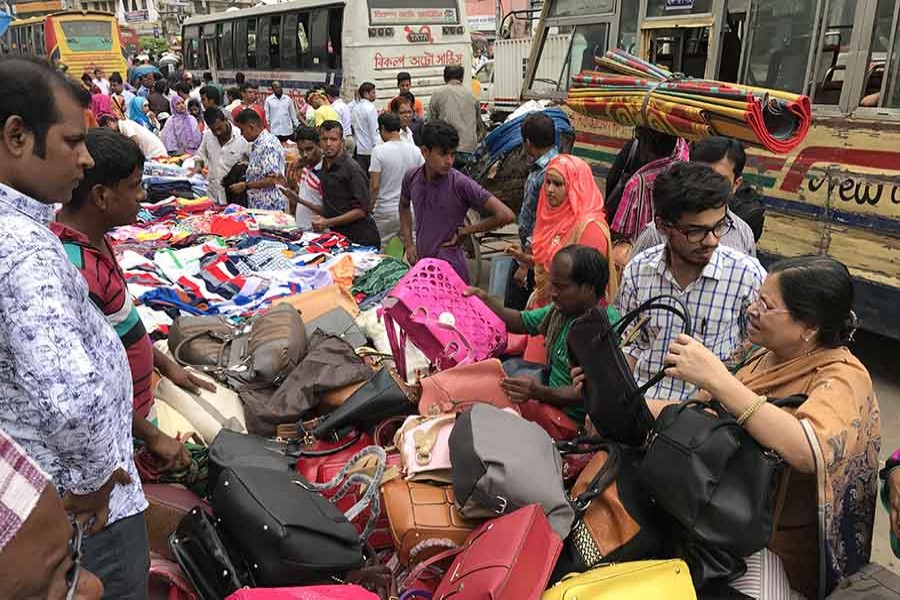Most of the streets in different neighbourhoods in Dhaka are not friendly to mobility of people. Even where the streets are quite wide, people do not enjoy the optimal benefit of those. A part of those streets is illegally occupied by street vendors, makeshift stalls, construction materials and even some street-side shops and restaurants.
Usually, these streets don't have any walkways or footpaths for pedestrians. Only a few neighbourhoods in the capital city have footpaths alongside streets. These footpaths, however, most cases scarcely announce their existence. Vendors and shops have already encroached upon walkways compelling people to walk on the streets.
Ideally, neighbourhood streets are surrounded by communities. These are the front doors to homes, residential complexes, schools, shops and restaurants. In Bangladesh, most of the neighbourhoods have developed without a proper plan and so have their streets. Nevertheless, keeping streets open for smooth movement of people and vehicles is a well-recognised urban norm. It is also a legal-binding for all not to put any barrier on roads. Whatever may be the norm or lawful right of people, making streets inaccessible for mobility is now seems to be an accepted norm.
Though every neighbourhood has more than one kitchen markets, street vendors and makeshift stalls are regularly selling vegetables on every street and lane. In some cases, fish vendors are also arrive on these streets, especially during peak hours. As some people find it easy to purchase vegetables and fish from street vendors, demand for the latter is high. A crowd of buyers and sellers on streets make it difficult to move or walk in busy hours. Fruit vendors are also there. As winter is approaching, street vendors are now selling warm clothes. Makeshift stalls of snacks are also typical. As vendors occupy streets, some shopkeepers and restaurants have also extended their shops to the street limits and keep their inventories or products there.
Another big problem is illegal parking of vehicles, especially motorcycles. A large number of notorious bikers park their motorcycles on streets creating a barrier to movement.
It is an open secret that these vendors have to pay a couple of bucks to police, municipality staff or local political cadres. Thus, they feel encouraged to occupy portions of streets illegally. As a good number of local people regularly purchase from these vendors, they largely ignore the inconvenience caused to smooth mobility. People at large are also shy of making protests and accept the hazards of narrow streets. Thus the practice of encroachment of streets is gradually eroding a healthy and cultured atmosphere of the city's neighbourhoods.
The utility of street vendors cannot also be ruled out. They are serving low-income urban people of most neighbourhoods. Some dedicated spots and time may be allocated for such vendors so that streets are not occupied for mobility in rush hours. It needs a realistic plan with a strong resolve for implementation. Streets are not for vending, parking or shopping, these are primarily for a walk and commute.


